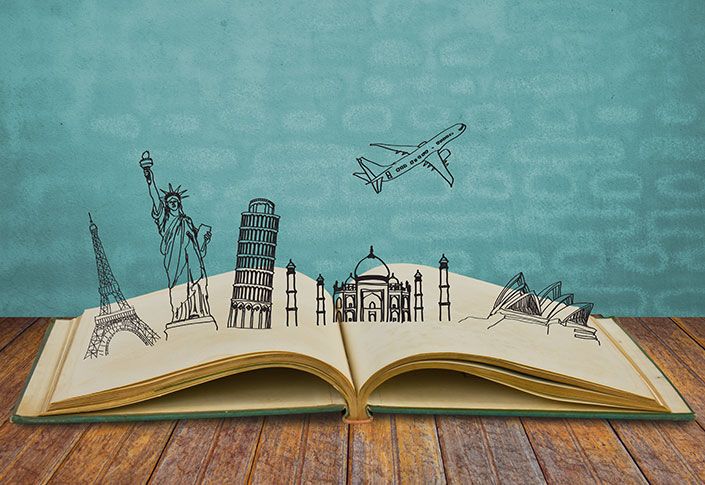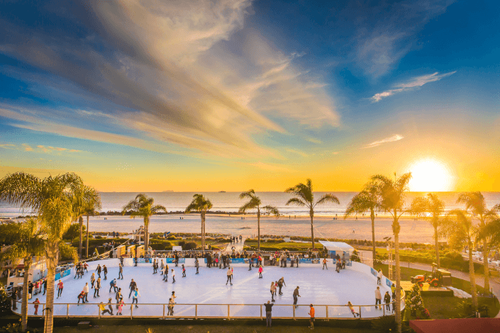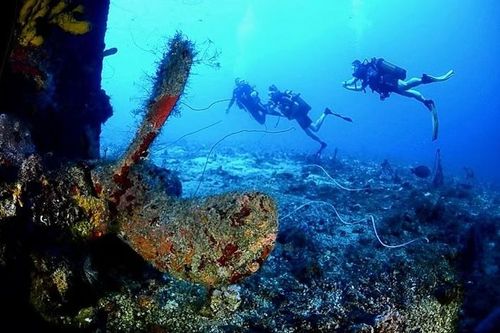Where travel agents earn, learn and save!
Travel & Selling Tips / When You Can’t Travel, These Nine Great Travel Books Are The Next Best Thing
Best books for the housebound armchair travel

As every travel writer and editor knows, most people who read books and magazine articles about far-flung or even close by places to visit never actually do. They might well pack a guidebook in their luggage to consult for the age of Rome’s Pantheon or the height of the Eiffel Tower or where to find a fried chicken dinner house in Omaha, but the more exotic a place is the less likely people are to get there.
The authors of the best travel books therefore do not seek to mark out routes, give hotel prices or locations of spice bazaars but instead try to give a thrilling panorama on the culture and natural beauty of a place and what makes it unique from all others. And they do it without the advantage of an expense account.
So, at a time, when travel is effectively prohibited, here are some of the best books written by the best authors for the housebound armchair travel.
Around the World in Eighty Days (1872) by Jules Verne
Although the enchanting 1956 movie made from Verne’s novel is now more famous, upon publication the original had been an international bestseller and Verne’s most popular book. Verne himself had never actually circumnavigated the world—he left France only once to sail around Europe—instead letting his imagination and research to produce science fiction stories along with Eighty Days, which was filled with headlong adventures from London to Suez, Bombay, Hong Kong, Yokohama, San Francisco and New York, all to win a small wager with his British club members.The book is a fantasy of another time but gets to the heart of what stimulates all human beings’ desire to travel well beyond their safe zones. It also demonstrates the technological triumphs of Verne’s age, including America’s Transcontinental Railway, the integration if India’s railroads and the opening of the Suez Canal, three years earlier. As a Frenchman, Verne could not help himself from writing of his British hero, Phineas Fogg, “As for seeing the town, the idea never occurred to him, for he was the sort of Englishman who, on his travels, gets his servant to do his sightseeing for him.”
Stories of Hawaii by Jack London
This is a collection of many stories London wrote during three long stays in the Hawaiian islands—1907, 1915 and 1916—which he loved at least as much as he did the Yukon territory he made famous in books like The Call of the Wild and White Fang.In stories both heartwarming and tragic, with enticing names like “On the Makaloa Mat,” “The Tears of the Ah Kim” and “The Bones of Kahekili,” the reader finds a wide-ranging gallery of characters, both native and not, and of how the islands had been impacted by immigrants and developers. London’s prose, often regarded as robust and sinewy, can be exotically beautiful here, as when he writes of the “lofty Koolau Mountains’s tradewinds” as “soft breathings, the air grew heavy and balmy with perfume of flowers and exhalations of fat, living soil.”
A Moveable Feast (1964) by Ernest Hemingway
Hemingway did not invent Paris but he created both fictional and non-fictional narratives about them that have became indelible, not least in A Moveable Feast, a posthumous memoir about his expatriate life in Paris with his wife Hadley, “when we were very poor and very happy.”Ever since its publication (as well that of The Sun Also Rises and “The Snows of Kilimanjaro”) travelers have viewed Paris through Hemingway’s eyes and descriptions: the food and drink at the brasseries like Les Cloiserie des Lilas (his favorite), Café du Dôme and Lipp; the “false spring” when he went to the Saint-Cloud race track; autumn in the Luxembourg Gardens; the market street of Rue Mouffetard where he bought mandarin oranges and chestnuts to nibble while he wrote. In those memories Hemingway crystallized the romance of a city as he knew it and how we all wish to see and taste it.
On the Road (1957) by Jack Kerouac
If Kerouac needed anything it was to be restrained and edited into an approachable form. The man just rambles on and on. But he did so with a fresh, marvelous open-eyed style that redeemed the old pioneer the notion that an American’s birthright is to follow where the road may lead him, even after the west was conquered and the Pacific Ocean was the country’s limit.Like his companion Neal Cassady (Dean Moriarty in the novel), Kerouac had a soul “wrapped up in a fast car, a coast to reach, and a woman at the end of the road.” It is the rare American of the last century who has been immune to that allure.
Travels with Charley (1962) by John Steinbeck
Based on a 10,000 mile 1960 cross-country trip Steinbeck took with his dog Charley in a camper named Rocinante, this rambling memoir gives us the author’s take on everything from eating lobster in Maine to a Thanksgiving Day “orgy” in Amarillo. He travels I-10, remarking on the imagination it took to build an Interstate highway system for national defense; of the great California redwoods, saying, "The vainest, most slap-happy and irreverent of men, in the presence of redwoods, goes under a spell of wonder and respect"; and saying his goodbyes to the territories of his childhood, climbing Fremont Peak and driving through his beloved Salinas Valley.Written at a time of troubling change in America, Steinbeck wrote of those he encountered, “I saw in their eyes something I was to see over and over in every part of the nation—a burning desire to go, to move, to get under way, anyplace, away from any Here. They spoke quietly of how they wanted to go someday, to move about, free and unanchored, not toward something but away from something. I saw this look and heard this yearning everywhere in every states I visited. Nearly every American hungers to move.”
The Great Railway Bazaar (1975) Paul Theroux
Written along what was called the post-Beatles “hippie trail” to India, this was a very new and different kind of travel book in that it did not glamorize the varnished wonders of all he saw but instead gave an accurate portrait of the poverty, post-colonial psyche of India and the travails of Asian trains. He returned to Europe on the Trans-Iberian Railway, but little of his four-month journey in 1973 was romantic in the traditional sense of travel literature and therefore gives a true-er picture of the deprivations a wanderer should expect.“Anything is possible on a train,” he wrote, “ a great meal, a binge, a visit from card players, an intrigue, a good night’s sleep, and strangers’ monologues framed like Russian short stories. . . . All travel is circular. I had been jerked through Asia, making a parabola on one of the planet’s hemispheres. After all, the grand tour is just the inspired man’s way of heading home. ”
A Year in Provence (1989) by Peter Mayle
At first intended as a novel, which never got written, all but ignored by the critics upon publication and rejected by every French publisher, this little paperback went on to sell six million copies around the world. Mayle wryly reported on about the trials and tribulations, joys and discoveries, tastes and smells of spending a year restoring a house with the help and opposition of local farmers, lawyers, unsavory builders and a clarinet-playing plumber.The book was a sensation as an invitation to a somewhat harried rustic life among genuine eccentrics, and it clicked in the hearts of both those who’d like to take a shot at such a life and those who could only dream of it. Despite many of Mayle’s characterizations of the provincial French as derogatory, come dinner time he said they “display the most sympathetic side of their nature. Tell them stories of physical injury or financial ruin and they will either laugh or commiserate politely. But tell them you are facing gastronomic hardship, and they will move heaven and earth and even restaurant tables to help you.” What Mayle did for Provence, Frances Mayes would do for Tuscany in her memoir Under the Tuscan Sun seven years later, not least to push up the prices for even the shabbiest of villas in that northern Italian region.
Iberia (1968) James A. Michener
Michener’s thousand-page novels like Hawaii, Centennial and Space were all based on extensive research going back and forth in historical time as a background for the fiction. Iberia was one of his non-fiction door stoppers, coming in at 818 pages, and what it lacked in Hemingway’s style and insight about Spain it made up for in detail, with each of thirteen chapters focused on a region.He is particularly savvy about Spanish food, describing, for example, a platter of 21 entremes, which were only the beginning of a four-course meal to follow. As he observed, “To travel across Spain and finally to reach Barcelona is like drinking a respectable red wine and finishing up with a bottle of champagne”—which seems just as true today as when Michener wrote it.
Blue Highways (1982)
The title refers to the secondary, blue-colored roads on Rand McNally maps away from the Interstate highways, which William Least-Heat Moon traveled after separating from his wife and his job. By staying away from the cities, the author found the rural American character can be quite different from that of urban populations. His rule of the blue road was, “ Be careful going in search of adventure—it’s ridiculously easy to find.”
More Selling & Travel Tips:
Your private villa awaits – Caribbean Club in Grand Cayman
The 10 Safest Countries in the World
Here are the top 10 places well-heeled travelers are booking for the holidays
Ambassadors Recommend the One Book to Read Before Visiting Their Country











